With a broad understanding of the issues at play, you can learn how to improve communication at work by following the guidelines below.
1. Establish baseline communication standards
Create a set of standards by which your company communicates both internally and externally. This will build a solid foundation on which future communication efforts can be built.
Depending on your organization’s needs, you might create brand guidelines, conduct communication training, or something else.
Consider, for example, when you order a meal at Chick-Fil-A. Every time, employees end their customer interaction with the phrase “my pleasure.” That’s no coincidence – it’s a communication standard set by the company for how it wants the business to be perceived.
This doesn’t just apply to customer-facing communication. How do you want employees, team members, direct reports, or your board of directors to perceive you, your work, and your communication effort?

2. Create a safe space for communication
Employees need to feel comfortable voicing their opinions, offering ideas, reporting issues, asking questions, and sharing criticism.
Whether you look at this from a top-down perspective (both to and from direct reports and leadership) or horizontal (colleagues and team members), your organization needs to create a safe communication environment on all levels and in all directions.
For direct reports, they need to feel comfortable bringing issues to you, knowing they’re in a safe space when communicating within the set standards mentioned above.
For your leadership, you need to feel comfortable approaching them with issues. If not, gently force the issue to uncover the reasons why it isn’t a safe space for broaching problems with them.
While horizontal communication focuses more on personal communication skills, it’s important to recognize issues that could arise from poor communication at this level. Plus, it underscores the need to support each other in fostering a safe space to share questions and concerns.
3. Must be consistent and constant
When it comes to communication in the workplace, employees should be able to rely on consistent efforts. By setting standards as mentioned above, communication should sound consistent.
But it goes beyond that. Effective communication in the workplace should come through consistent channels and vehicles and people.
Don’t keep people guessing, and don’t overwhelm them with too many channels. Employees should be able to expect when changes or big announcements are coming and know the go-to source for getting updates. Thus, they should realize that if they miss one team meeting or email, they’ll be left behind.
This requires constant communication, not a one-and-done effort. If the only time employees hear from leadership is when a major problem or change crops up, they will begin to fear communication from those leaders.
That’s the exact opposite of what you’re striving for – a safe environment. Instead, they should be accustomed to hearing what’s going on and getting some warning (when appropriate) that change is afoot.

4. Set clear norms and expectations
While this resembles the advice to set standards, it’s more about the “how” of workplace communication in terms of the channel, the frequency, and the expectations.
Does it happen through email, in face-to-face meetings, via employee surveys, or some other mode of communication? What is the expectation for checking email after hours or on weekends? What is the norm for answering phone calls or text outside of the office?
For teams that work together over long periods of time, these norms develop naturally.
However, the business landscape changes at rapid speed, and what once worked a few years ago might no longer be effective.
Plus, although new technology makes communication easier, it often doesn’t convey body language, tone of voice, and other nuances of face-to-face discussions.
Therefore, it’s good to regularly address the “how” of effective communication at work.
5. Proactively seek feedback
Alarmingly, research from Gallup shows that more than 50% of American employees aren’t engaged at work. That could result in high turnover, decreased productivity, and dissatisfied staff.
Rather than wait for employees to approach higher-ups with issues, the company should be taking the initiative to seek their input.
Good workplace communication needs to be a two-way street if you want engaged employees who feel valued and motivated.
An obvious first step could be to conduct employee engagement surveys to get feedback. By regularly surveying employees, leadership can collect feedback and drill down into the data needed to monitor issues, improve workplace culture, and boost employee engagement.
However, surveys aren’t the only way to seek employee input.
Other feedback-gathering methods range from informal, one-on-one discussions to adding a Q&A component to weekly staff meetings.
The key is to integrate two-way communication efforts throughout the business to regularly collect authentic employee input.
6. Leverage technology the right way
Everyone agrees that email saves time, reduces paper costs, and is an environmentally friendly business practice.
But it’s not always an effective way to communicate. Just because you send an email doesn’t mean all recipients comprehend the contents or are able to adjust their day-to-day jobs in the way you want.
This especially holds true for official communication that requires action. Furthermore, assuming that employees will read and comply with important emails can put your business at risk.

7. Master your meetings
Meetings are the mainstay for most companies, especially businesses wondering how to improve communication in the workplace.
They can be both a blessing and a curse.
On the one hand, they can be a productive way to get multiple people aligned and working toward the same goals. However, if run poorly or have too many extraneous people involved, meetings can have the opposite impact.
If you’re seeing communication issues in their workplace, meetings can be a quick win and easy adjustment.
Simple but effective strategies here include keeping meetings short, sending an agenda ahead of time, staying on topic, inviting only those people whose presence is truly needed and outlining clear action steps you want participants to take after the meeting.
8. Get control of mobile communication
Mobile technology isn’t going anywhere, but it presents unique communication opportunities and challenges.
It’s crucial to get control of how your organization communicates and how it expects others to communicate while mobile.
Again, this is part expectation-setting and part adapting to the changing landscape in a proactive, positive way.
9. Communication with remote employees
Remote employees are no longer an anomaly – they’re commonplace in businesses of every size.
If you have remote employees, you’ve got some means to bridge the location gap, including chat apps, video conferencing, and cloud tools. However, it’s easy for communication with remote employees to fall through the cracks, even if it’s not intentional.
According to research on “the deskless workforce” by Zogby Analytics, 38% of remote workers cited a lack of information and 39% cited the timeliness of information as the most common obstacles to their efficiency.
That’s why it’s incumbent upon the onsite team to include remote workers in informal conversations and ad-hoc discussions.
This can prove difficult at times, but it’s key to making them a part of the team. It might even take extra effort by the manager and leadership to keep remote employees abreast of what’s happening with both the team and the company.
10. Collaboration in the cloud
Cloud-based tools can be a godsend in getting work done and offer new ways to communicate within the organization.
However, they are fraught with landmines as digital communication doesn’t provide an opportunity to convey context or nuance or tone. What you think is a harmless comment or suggestion may not always be received that way.
This is especially true for leaders who might feel they are making helpful suggestions, but instead, employees take these “suggestions” as direct orders.
11. Make internal documents easily accessible
Employees are busy enough without having to spend a lot of time looking for internal documents. This is especially true for having to ask around for basic information like holiday schedules or vacation policies.
Besides wasting time and draining productivity, it frustrates employees to not even know where to find important documents and key information they need to do their jobs. Help employees easily access policies, procedures, guidelines, and other crucial information, making everything readily available and easy to find.
Not only will this improve communication in the workplace, but it will also empower employees to stay informed.
12. Break down communication silos
Silos exist in many organizations, even small businesses. When employees only focus on their own roles, departments, or objectives, they’re not collaborating with others.
Sometimes this means missed communication, where one department doesn’t know what the other is doing or worse, inadvertently undermines what another department is trying to accomplish. Other times, this means they lose out on the fresh perspective that comes with collaborative efforts – crucial for understanding the “big picture.”
But to improve communication in the workplace, you must be committed to breaking down silos when they are discovered. Include employees in the decision-making processes.
Let those who need to know be a part of the conversation. And be as transparent as you can be.
13. Accountability
By taking the above steps (and doing them well), it gives you the freedom to hold employees accountable to the expectations you set. It also allows you to track who is and isn’t doing what’s being asked.
If you get this out of order and attempt to hold people accountable without fixing the other communication issues, it won’t work and employees will resist the changes being made.
Policy management tools like PowerDMS help you streamline how you manage your crucial documents. PowerDMS condenses cabinets full of paper into a central, secure, searchable online system – easy for employees to find, access, and use. Plus, it automatically disseminates, collects signatures on, and tracks your organization’s important policies and procedures so you know who has received and acknowledged each communication. Get key information on policy management and how it can help your organization here.
Admittedly, it can feel daunting to solve communication issues in the workplace. But understanding the internal roadblocks and following the guidelines above should empower you to improve communication at work.



